Is the Great Fishkill of 1976 About to be Repeated? By Jim Lovgren
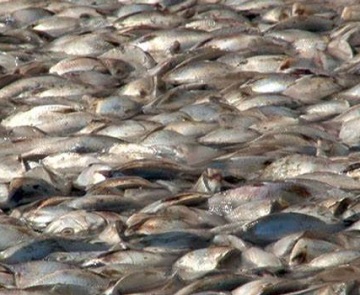 In 1976, our country suffered the worst man-made environmental catastrophe in its history up to that point in time. An estimated 2,500 square miles of ocean waters off the New York/ New Jersey coast experienced a Hypoxic event, [oxygen depletion], which began with a simple algae bloom offshore that drifted north into the sludge dump site 12 miles off Long Branch, N.J. When the bloom encountered the nutrient rich sewerage, it exploded in a feeding frenzy eventually expanding in size to cover from the south shore of Long Island down the Jersey coast as far as Atlantic city, and stretching 40 to 50 miles to the east. When the Algae started to die, [as it always does] it sank to the bottom and started to decompose, which results in oxygen depletion. Most of the fish in the area were able to swim away from the dead zone being created, but the bottom dwelling [benthic]species, clams, scallops, conch, starfish, crabs, and lobsters could not, and they died. The E.P.A. estimated kill ratios among bottom dwelling creatures in the dead zone at 40% to as high as 99.5 %.
In 1976, our country suffered the worst man-made environmental catastrophe in its history up to that point in time. An estimated 2,500 square miles of ocean waters off the New York/ New Jersey coast experienced a Hypoxic event, [oxygen depletion], which began with a simple algae bloom offshore that drifted north into the sludge dump site 12 miles off Long Branch, N.J. When the bloom encountered the nutrient rich sewerage, it exploded in a feeding frenzy eventually expanding in size to cover from the south shore of Long Island down the Jersey coast as far as Atlantic city, and stretching 40 to 50 miles to the east. When the Algae started to die, [as it always does] it sank to the bottom and started to decompose, which results in oxygen depletion. Most of the fish in the area were able to swim away from the dead zone being created, but the bottom dwelling [benthic]species, clams, scallops, conch, starfish, crabs, and lobsters could not, and they died. The E.P.A. estimated kill ratios among bottom dwelling creatures in the dead zone at 40% to as high as 99.5 %.
The Surf clam fishery off the Monmouth and Ocean County shore was devastated, and has been barely profitable since, except for use as bait. The nearshore scallop beds a few miles off Asbury Park, never came back. Lobsters reinhabited the mud hole over time, and the fall migration of finfish species occurred as usual. This Fishkill was a death blow for the New York and northern New Jersey sewer kings who did not want to clean up their act and insisted that the ocean can absorb it all. Commercial and recreational fishermen had been complaining about the water quality in the New York Bight for years by now, but nothing was ever done, as the government wanted to dispose of sewerage as cheaply as possible. After this unprecedented environmental disaster, they were forced to do something, as the general public was now up in arms, and environmental organizations were springing up with the express purpose of stopping Ocean sludge dumping. The American Littoral Society, created by Monmouth County resident Derry Bennet led the anti-sludge dumping movement, soon joined by the newly created Save our Shores. In 1983 Derry created Clean Ocean Action, and hired Cindy Zipf to run it. Eventually sludge dumping ended in 1989 by an act of Congress. This Fishkill also brought other barbaric dumping practices to the public’s attention, in particular Acid Dumping on the Cholera Banks, burning barges from the NY harbor, and contaminated dredge spoils. All of these fights were led by Clean Ocean Action, who successfully sued the NY/NJ Port Authority over contaminated dredge spoils dumping, which was loaded with P.C.B.s and Dioxin. Their lawsuit resulted in setting nation-wide standards for the amount of contaminants allowed in dredged material before it is not allowed to be dumped in an ocean dump site. The point of this is, citizens can unite and fight the bad guys, if they work together, and develop a strategy of attack. Unfortunately, it took an environmental disaster for the public to wake up and become involved.
That is where we are now, on the verge of a manmade, greed-driven, environmental catastrophe that will make the 1976 fish kill look like child’s play. This one involves animal extinctions. Many people are aware of the recent spate of marine mammal deaths along the east coast, but many do not, because the mainstream media is trying to ignore them. Of course, when it is covered, it’s a paid-off flunky, or integrity challenged scientist who states that the deaths have nothing to do with offshore wind. In 1976 sewerage sludge was the catalyst for a massive Fishkill that just happened to have the right environmental conditions to amplify its effects. The coming catastrophe will be caused by noise.
The constant, incessant, deafening crescendo of high-powered sonar, seismic, and piledriving, 24 hours a day, season after season, year after year is going to permanently alter the marine environment and increase global warming. Recent scientific studies have found that windfarms actually increase the atmospheric temperature in its vicinity by several degrees, while an unknown number of massive electrical substations will be situated on each lease site drawing sea water directly into its system to cool off the heat generated by electrical conversion. The cooling system of these substations is comparable to the ancient nuclear power plant cooling systems that destroyed wildlife along the east coast by impingement and heating of the estuarine waters that the system used. Each of these substations are going to increase the water temperature around them, perhaps substantially, but don’t worry, the ocean can absorb it. Just like the old days.
While the government flunkies and windmill developers all chant there is no proof the sonar or seismic is harming the marine mammals that are increasingly winding up dead on our beaches, they ignore the growing mountain of evidence that proves it does. The real question is what are acceptable levels of noise that will not cause harm to creatures that rely on hearing to survive. Funny thing, it seems that the alphabet environmental groups only care about seismic and sonar testing when it affects our countries national security or the oil industry. They all have been remarkably silent, as they watch their worst nightmare unfold before their eyes. Greenpeace made saving the whales their number one priority, yet today simply say, the Whales are not being killed by windmills. Here’s an interesting quote
from Surfrider Tasmania President, Ally King from 2022, “ It is absolutely ridiculous to be allowing international companies to blast our coastline, with no benefit for local communities, or regard to marine life. The onus should be on the proponent to prove no harm, and the precautionary principle should be implemented until that is the case.” Miss King was talking about seismic testing for oil in this case.
The crutch that the windmill supporters cling to, the fact that there is no scientific evidence linking the marine mammal strandings to sonar or seismic testing, is a testament to the power of the oil companies upon our government agencies. The US government has done nothing in the way of research into what are undeniably dangerous levels of sound upon the creatures that are subjected to it, because if the facts are known, seismic testing of all forms and levels would be banned. Sonar would be regulated to safe levels under controlled conditions. Fishermen around the world know what the effects of seismic research does to the fisheries they depend on, but their reports of barren fishing grounds for years after seismic testing is ignored and ridiculed. Here is an eyewitness account of the aftereffects of seismic testing on a local fishing ground, the Manasquan Ridge.
In 2016 I was Fluke fishing on the Manasquan ridge on my 75 foot trawler, the Shadowfax, along with my brother Denis, with his boat the Kailey Ann. We were working on a 500 pound a day trip limit, which we were catching in two to four hours of towing time. That summer, the Army Corps of Engineers performed seismic testing on a number of near shore sand lumps to see if they were of a suitable material for use in beach replenishment. One morning the Army Corps research vessel showed up and started blasting away, crisscrossing the whole area of the ridge for days. I forget how many, could have been a couple weeks even. Our fishing remanded the same that first day, but was substantially reduced by the next. By the third day, we could no longer catch any Fluke there, and had to find another spot, either Augies to the north, or the Island beach tow, two miles offshore, which were unaffected. We did not catch another Fluke on the ridge that year, and it always was a hot spot in the
fall. In the six years since, the Manasquan ridge has not produced any profitable amount of Fluke. The seismic testing killed everything on the bottom, sand eels, clams, worms, crabs, all the benthic creatures that support an ecosystem. For a number of years afterwards the ridge didn’t hold fish that might have stayed for a while if there was something to eat. Today the ridge is covered in mussels which moved up from the south, taking advantage of the void left by the exterminated benthic organisms. You think maybe Rutgers might have wanted to research the effects of seismic testing in such a small local area that would have been perfect for a long term study. But no, they were too busy in 2015 killing Whales with their own seismic research, which didn’t include any study of what effects their work did to the marine ecosystem off of central New Jersey.
Critical research was done in regard to the effects of seismic testing on scallops, after Australian and Tasmanian fishermen claimed the scallop beds they were fishing had been wiped out by seismic testing for oil. IMAS and Curtin University found that noise from seismic air guns significantly increases mortality in scallops. In 2010 a seismic survey in the Bass Straight killed entire Scallop beds, resulting in a 70 million dollar loss to the local fishing industry. If seismic and sonar noises can be so deadly, what happens to the dead bodies of the animals that are killed? I have been getting credible reports from scallop fisherman who are noticing an abnormal amount of “clappers” in their tows. A clapper is a scallop that has died and its shell is still together, unlike when they are shucked, and their shells are separated. The Scallop beds northeast of the mudhole and Hudson canyon will be where we will find out exactly how much they are killing. These grounds are healthy, the scallops do not have the blister disease found in southern scallops so there is no natural cause to blame if these beds die. The Scallop industry is the most valuable fishery on the east coast, contributing hundreds of millions of dollars annually to the local economy, if these beds die the financial repercussions throughout the industry will
be catastrophic.
We have Whales and Dolphins washing up on our beaches in a daily routine, now endangered Sturgeons are washing up, along with sharks of all sizes, while the offshore wind vessels continue their environmental onslaught along the whole east coast. I believe that by the end of this summer we could be witness to the biggest manmade environmental disaster of all time. If the right environmental conditions line up, a hypoxic event of unseen before dimensions will occur. Sonar and seismic testing kill almost everything on the bottom below the research vessel. There are dozens of these killers crisscrossing every square inch of the bottom between Cape May and Nantucket Island leaving dead organisms in their wake. What happens when a sea creature dies, it lays on the bottom and bacteria start eating it. Sometimes algae blooms can form from this decomposition, these eat up the oxygen in the water and cause oxygen deprivation, which starts to kill the nearby creatures who then decompose and eat up more oxygen, multiplying the hypoxic event. The trigger for this to happen will be environmental with the two key ingredients being a hot summer with warmer than usual water temperatures, and a lack of any substantial storms during July and August. The storms will be the key as they have the ability to mix the water column and “stir things up”, which will oxygenate the water. If warm water lays undisturbed in the New York bight this summer then we are in trouble. Ocean layer stratification could also play a deadly part, if a lot of rain flushes fresh water out of the NY harbor into the mud hole area. Fresh water will lay on top of salt water because it is lighter and this layering is called stratification. This can create a situation where the salt water is trapped by the fresh water and will
magnify a hypoxic event.
Why hasn’t this happened before, after all Europe has been doing this for years in their coastal waters, and despite fishermen’s claims of dead fishing grounds, there has not been a hypoxic event there, at least that I know of. The difference between them and us is water temperature, the waters of northern Europe are quite a bit colder than those of the US east coast, colder water slows down decomposition, and the currents through the English Channel provide a stirring of the bottom. There has
never in history been such a large number of deadly noise makers in the same place, and it looks like it will be a hot summer. I pray I’m wrong about this…..




































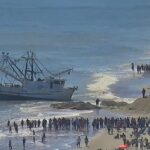

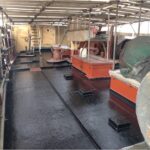
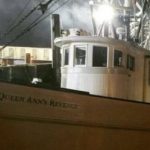
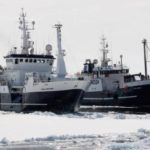
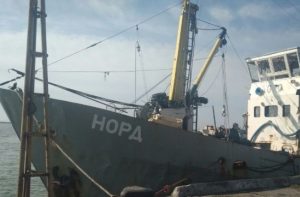

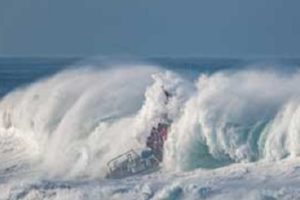
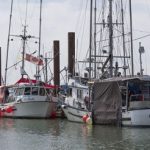



[…] *** Is the Great Fish Kill of 1976 About to be Repeated? […]
[…] an article posted in the spring of 2023 in Fisherynation.com, “Is the Great Fishkill of 1976 About to be Repeated?“, I suggested that the New York bight could see an environmental catastrophe that could […]